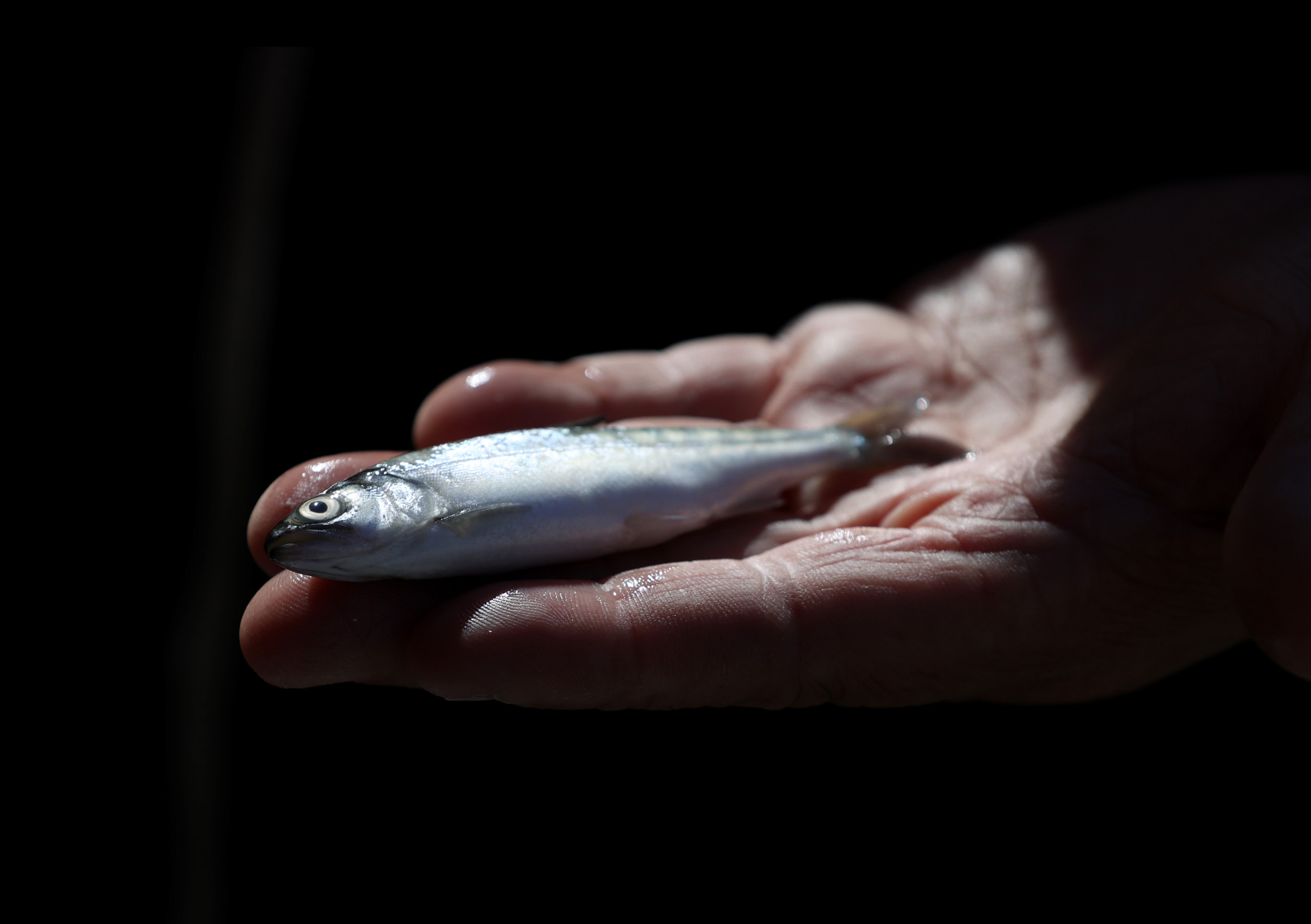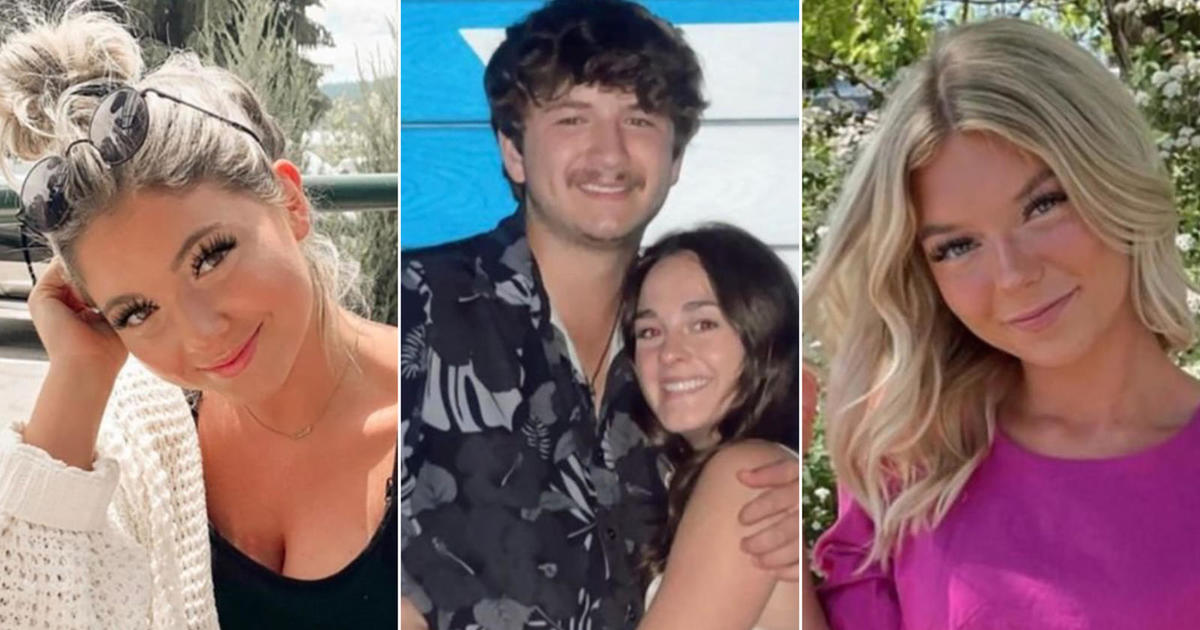Idaho
Don Chapman, Idaho's respected fish scientist, is constantly thinking deeply, broadly and ahead • Idaho Capital Sun

Don Chapman and Bill Platts are Idahoans whose careers in science have built our shared understanding and caretaking of fish and rivers. Both men are now in their middle 90s. Don resides in McCall, Bill in Boise. Here I write about Don; Bill Platts will follow, in a month or so.
In saluting these two men, I also salute their trade, and those who follow it: the close observation of salmon, trout and their waters. In classroom, field and well-rifled filing cabinets, scientists who could be their grandchildren now build from their work. Conversations with another such observer, Bert Bowler, spurred me in this respect among others.
The knowledge and long experience of these two men also matters to a collective choice now before our state and region: Will we allow wild steelhead and salmon to disappear from Idaho and eastern Oregon, or change our course? Will we keep the Salmon River for tomorrow’s Idaho, or hand down, as our legacy, the Salmonless River? The extinction of Snake River salmon, which began with white settlement, is now in its endgame, in our time and before our eyes. Chapman and Platts offer evidence, and example, to we who will make the human part of the choice. Salmon will have a part too, and we can have faith the fish will do their part if we do ours.
‘We want to be just like Don Chapman’
In 1969, Russ Thurow began studying fisheries science at the University of Wisconsin-Stevens Point. Prominent on his reading lists were the advanced research and analysis issuing from Don Chapman, at the University of Idaho. A couple years later, Don came to Wisconsin for a few days to present a seminar. “We were blown away by Dr. Chapman and his work. It became, when we grow up, we want to be just like Don Chapman.”
Which, in a way, happened. Thurow came to Idaho and made his own lifetime career in trout and salmon science. He, and Don’s U of I students, became parts of the 1970s-80s influx of fish scientists into state, tribal and federal agencies Northwest-wide – and, a bit later, into profit and nonprofit enterprise. One braid in Chapman’s achievement is as catalyst over decades to more fully knit fish science and fish management. Much of the knit took the form of well-trained scientists.
Every former student I reached recalls him with gratitude. Their voices grow bright. He was well-prepared, demanding, exceptionally intelligent, a professional example of hard work and clear thinking. In sum, an excellent teacher and inspiring mentor.
In the field, Don taught the strenuous practices of fish research in rivers and streams. His students spent much time in wet suits, face down in waters, learning how to observe and measure fish populations, behaviors and what regulates those behaviors and outcomes in living rivers.
“He was a taskmaster,” Fred Everest recalls. “He worked our asses off. He was one of the best in the country, and I was all in.” Dr. Everest went on to U.S. Forest Service research stations in Oregon and Alaska, publishing some 100 reports and papers.
In class, Don covered extensive ground, required deep reading and introduced advanced mathematics. Here is Richard Scully, of Lewiston, Idaho Fish and Game biologist, retired: “Don taught me population dynamics. It was intense. He was expert at math and statistics. Always straightforward, to the point. He also listened very closely; you could tell you had his full attention.”
Greg Munther later became the Sawtooth National Recreation Area’s first fish biologist in 1974: “He challenged us all to think deeper, to put things together. And he gave me the tools with which to challenge my own thinking.”
Steve Pettit, Idaho Fish and Game combat biologist, retired: “I took fisheries management from Don and enjoyed every second. He was a wonderful lecturer, a deep thinker, a real mentor. Also, he had so much practical field experience.”
His students couldn’t miss Chapman’s high stature with his peers. Steve Pettit recalls a big meeting of fish managers and scientists at the Columbia Gorge Hotel in Hood River, in the 1970s. Some 300 people listened as Don Chapman warned about “scientific onanism” and how to avoid it. “The thrust was: Make sure you have your empirical results nailed before you say anything about your work. How he laid the subject out and examined it was masterly. He got a standing ovation; people were buzzing about it at dinner.”
An Idaho fish story
From 1964 to 1972, Don taught within, and led, the newly-formed Cooperative Fisheries Research Unit at the University of Idaho. Coop Units link agencies and institutions that have fish problems to solve or knowledge gaps to fill, with graduate students who do tailored research as part of their progress toward professional degrees. Senior scientists lead the Coop, teach students, guide research, and continue their own work. In eight-plus years, Don and his colleague Ted Bjornn built the Idaho Unit into one of the nation’s best.
A half-century later, the Idaho Fish Coop Unit continues at Moscow, now merged with the Wildlife Unit. Courtney Conway, its current leader, told me fisheries graduate students now number two to three times those in Chapman’s years, half or more of them female. Its couple hundred students over six decades are generationally laced through the Idaho Fish and Game Department, other state fish agencies, federal and tribal agencies and businesses. Chapman laid its keel well and durably, 60 years ago. (See https://www.uidaho.edu/cnr/idaho-cooperative-fish-and-wildlife-research-unit.)
Westslope Cutthroat Trout, or WCTs, offer a good example of Chapman and the Idaho Fish Coop Unit at work.
“WCTs are the most catchable salmonid in the river,” Steve Pettit says. “They don’t develop wariness, and in granitic Idaho streams it can take them six years to mature, which is a long time to not get caught. So they’re very susceptible to angling pressure.”

In the 1950s and ‘60s, WCT decline became serious in many Idaho rivers, as roads were punched deeper into backcountry and fishing followed the roads.
In Kelly Creek, in the North Fork of the Clearwater River, WCTs were getting scarce and much smaller. “In 1970 or so Don came up with an idea: study if a non-consumptive fishery would work. What would happen if you changed the local regulations to catch-and-release for WCTs?” It was the first catch-and-release evaluation in Idaho. Idaho Fish and Game and the Idaho Coop Unit collaborated to secure federal funds. A year-plus into the research, Chapman hired Pettit for the extensive summer field work that Coop Unit grad student Kent Ball had begun.
The results were compelling. WCT abundance in Kelly Creek increased three to sixfold after two years of catch-and-release, and 13-fold after five years. Fish size increased markedly. Fishermen who thought catching a WCT was likely to kill it even if released alive were shown wrong. In their fine paper on the wider WCT comeback in Idaho, Jerry Mallet and Russ Thurow write that the “Kelly Creek investigations were the first to confirm that catch-and-release was effective in increasing WCT abundance and size, while maintaining angler opportunities.” (Jerry Mallet and Russel F. Thurow, “Resurrecting an Idaho Icon: How Research and Management Reversed Declines of Native Westslope Cutthroat Trout, Fisheries, American Fisheries Society, 2001. DOI:10.1002/fsh.10697.)
These lessons were quickly applied to WCT management in other rivers, and to wild steelhead and other species.
“Catch-and-release regulations caught on fast, in Idaho, around us, and Canada,” Pettit says. “Don’s idea got a lot of that rolling.”
A fish scientist in forward motion
Don’s own scientific work ranged widely over decades. He was research director for the Oregon Fish Commission before coming to Idaho. After Moscow came seven years with the U.N. Food and Agriculture Organization, leading fish stock and catch assessments on Lake Tanganyika, the Zambezi River, the Magdalena and Amazon Rivers, and other waters in South and Central America and Africa. This was science applied to help on-site managers and users monitor and sustainably exploit fisheries.
Returning to Idaho in the late 1970s, Chapman began consulting for agencies, tribes and businesses, mainly in the Northwest, California, Montana and Alaska. He was an independent consultant for the U.S. Justice Department in the historic Boldt Two court proceedings, and a consultant to tribes on other cases. (Boldt One established tribal treaty rights to share equally in harvest. Boldt Two framed up the co-management to assure the equal share occurred.) He advised Idaho Fish and Game in harvest allocation, where advanced math is an essential language. For Northwest public utilities, Don developed estimates of pre-Caucasian Columbia and Snake River salmon and steelhead numbers and led status assessments of remaining populations. He served on the National Research Council’s salmon panel, convened after the Endangered Species Act listings of Columbia and Snake salmon in 1992-94.
Of his publications, I will pause on his 1966 synthesis, “Food and Space as Regulators of Salmonid Populations in Streams.” (D.W. Chapman, The American Naturalist, Vol. 100, No. 913, July-August 1966, pp. 345-57.) Here he seeks patterns across some 30 face-down-in-the-river research papers, including his own, to propose a conceptual theory of the factors that regulate trout and salmon populations in streams. Food and space are the main regulators, in site-distinctive, complex interactions.
The paper quickly landed on fisheries’ reading lists — and is now a classic. What impresses this non-scientist is its brisk pulse, of science in forward motion. Reporting his own research, Don notes other findings that qualify or complicate his. He speculates (his word) toward pattern and theory across rivers and species, and formulates new lines of inquiry. The paper models the helix of close investigation and interpretive imagination that good science applies, in pursuit of what and why, information and meaning.
The voice is unmistakably Don Chapman’s, calling himself, students and colleagues to move fish science forward. Today, much of the pattern-seeking, predictive work in fish science is expressed in advanced mathematics, an evolution Don was part of. But in this paper he works in words, which, with diligence, I can understand.

‘I can no longer defend the dams’
In his unretiring retirement, Don became a public pivot in scientific consensus about the lower Snake River dams.
Through the 1990s, he opposed their removal. He believed barging young ocean-bound salmon around dams, plus other adjustments, could sufficiently mitigate harm from the dam system. The case for dam removal he judged uncertain. And, he was expert in the harm from many cases of degraded natal habitat in Idaho and elsewhere, and from some ocean and in-river fisheries. For some of this time, Don was consulting for Northwest public utilities, which sought to minimize Endangered Species Act-driven changes at dams. Some former students and colleagues were uneasy, or upset, about his positions on dams while a utility contractor. Don was unapologetic. His uncertainty if the four dams had to go was publicly and politically influential.
Dave Burns publicly debated the subject with Don around 2000. Dave was a University of Idaho fisheries Ph.D. student just after Chapman departed Moscow, then a Payette National Forest fish biologist for 30 years, president of the Idaho Chapter and Western Division of the American Fisheries Society along the way – and, a McCall friend and fishing buddy of Don’s.
“We took opposite points of view in the debate,” he says. “But I think Don was starting to change his mind around then. He kept weighing the evidence. He always mulled ideas and talked ‘what ifs’ with colleagues.”
When Don did change his mind, in 2005, he went public to Rocky Barker, the inland West’s best and best-read salmon journalist.
“I had known Don, and reported his arguments, for 15 years. I called him ‘the voice of scientific uncertainty’ to my readers. Then he phoned me: ‘I can no longer defend the dams.’ It is one of the great stories of my career. It went all over, generated more stories and more debate — as Don knew it would, and wanted.”
Chapman’s main reasons for his change were global heat trends, and the rising trendline of Columbia River summer temperatures since 1950. Salmon are cold-water fish. Hot water drains and kills them in several ways, for example in its effects on seasonal migrations out to and back from the sea. (In 2023, 90% of Snake River Sockeye Salmon that entered the Columbia’s mouth died before ever reaching their Sawtooth Valley lakes. Hot water is one reason.)
Rocky’s story made waves in Northwest hydro, salmon and political ranks. Don’s former utility clients were uncertain how to respond. Don also hit the road for a period, making his case in public presentations to fishing, conservation and scientific audiences in Idaho and eastern Oregon. He was again, in school of another sort, a prepared, persuasive, somewhat demanding teacher. When the New York Times published a story on Snake River salmon science and dams, in 2019, Don Chapman, 89 years old, was quoted. And quoted again in 2021, in another Times’ story in which salmon figured.
In the end Northwest utilities chose not to start a salmon science argument in public with Don Chapman. Their use of science has since turned anecdotal, opportunistic and often quietly deployed. Northwest utilities no longer attempt a public, evidence-based scientific case against restoring the lower Snake by removing its dams, or offer an evidence-backed alternative to recover Snake River salmon and steelhead.
In the 1990s, I saw first-hand how Chapman’s field tour of Pole Creek, in the Sawtooth Valley, focused senior federal fisheries staff on badly degraded salmon habitat in central Idaho. In 2021, when NOAA Fisheries reached its belated conclusion that the lower Snake dams must go to prevent Snake River salmon extinction, the agency’s main reason to change its mind was the climatic trends Don had marshalled for his.
In the 1990s, scientific support for removing the lower Snake dams was solid. Today it is overwhelming, nearly unanimous across fish agencies and in the profession. This has been a persuasive change – for example, to Congressman Mike Simpson, U.S. Sen. Patty Murray, Washington Gov. Jay Inslee, and the Biden administration. Don’s public change of mind was a prominent strand in its creation.
Chapman has thought extensively about how to remove Snake River dams
A career-long Don Chapman design feature is to think deeply, broadly and ahead. It’s no surprise he has thought more closely about how to remove the lower Snake dams than any fish scientist I know. Remember, removing the dams means removing only their earthen sections; most of the concrete and dam works will remain.
Northwest tribes, feds dive into work on salmon revival in upper Columbia River
A lot of sediment is captured around the confluence of the Clearwater and Snake rivers. That’s why every seven or so years the Army Corps must re-dredge to keep its Lewiston “seaport” open. Don sees that sediment as future riparian soils in a restored lower Snake River.
“If breaching is done hydro-dynamically,” he told me some years ago, “you can use that accumulated sediment. Start with Lower Granite Dam, help the river cut through the sediment to make a canyon, and leave riparian increments as substrate for flourishing terrace systems. Rich soil there. I think much of it could be held in place by irrigated vegetation as the river channel cuts to its old bed level. This has to be carefully done, under engineering control; a multi-disciplinary group could figure it out. Drop the river to cut, not to flush. So some of the sediment stays to rebuild, rather than ending up in McNary Dam pool.”
And, after a pause: “I bought peaches in the lower Snake canyon in 1963, before it was flooded. The riparian zone was abundant. A valuable 140-mile recreational paradise could develop between Lewiston and the mouth of the Snake, in riparian systems on sediments currently underwater and already owned by the public. That’s on top of the benefit to salmon.”
Chapman’s work never ended at just ‘fish scientist’
I have made a few brief touch-downs into Don Chapman’s scientific work, and across its breadth. Compressing his international work into two sentences is bad enough, but other large parts of his work get no mention at all. I have also left out his lifetime of fishing, which connects at points to the character and content of his work.
Fisheries science is a summary term, spanning fields and subfields. Don’s versatile, probing intelligence, and his influence, is found across that span. Field scientist. Developer and tester of research techniques. Advanced analytic scientist. Theorist. Teacher and mentor. Institution-builder. Communicator to student, professional, political, business, cultural and public audiences. Multi-level connector of fish science to fish management. Senior fisheries consultant. Public scientist. And, for six decades, a leader in his profession.
So I raise a glass, to thank Don Chapman. Fish, rivers, fishermen and women, your profession, and your state are much in your debt. Dorothy Chapman and Don have been together in McCall for 44 years. They have between them six children, and 24 grand and great-grandchildren.
Author’s note: I am grateful to Bert Bowler, Fred Everest, Russ Thurow, Dave Burns, Steve Pettit, Greg Munther, Richard Scully, Bill Platts and Rocky Barker for talking to me about Don, and grateful to Don for interviews over several years.

Idaho
Idaho Falls man arrested for aggravated battery after SWAT Response – Local News 8

IDAHO FALLS, Idaho (KIFI)-An Idaho Falls man has been arrested for aggravated battery, ensuing chaos in an Idaho Falls neighborhood, and causing a SWAT response from the Idaho Falls Police Department.
The suspect is identified as 47-year-old, James Schumacher.
He was arrested for slapping a person on the face and making a threatening statement. He then damaged a second person’s vehicle causing $3,000 in damages.
Schumacher then hit a third person in the face with a rusty metal serrated edged gardening tool.
A fourth person came outside of their residence when they heard the commotion armed with a paintball gun loaded with pepperballs.
Schumacher swung a sign at the fourth person, who then shot and hit Schumacher with a pepperball with no effect. Schumacher went back to his property and threw rocks at the other people.
At that point, Officers began arriving on scene. Officers told Mr. Schumacher, who was standing on his porch, he was under arrest and gave commands for him to come to the officers. Schumacher retreated inside his residence and barricaded himself inside. Officers made several attempts to speak to Schumacher by calling his phone and using a PA system without any response from Schumacher.
Schumacher, an Idaho Falls resident, was arrested for Felony aggravated battery, felony aggravated assault, felony malicious in injury to property, and misdemeanor resisting and obstructing.
He was also cited for misdemeanor battery, misdemeanor attempted battery, and misdemeanor disturbing the peace.
He is currently booked into the Bonneville County Jail.
(This information is from an Idaho Falls Police Department press release. The original author is Public Information Officer Jessica Clements)
Idaho
What Idaho’s Republican Primary Tells Us About The Culture Wars

For years, Idaho has been at the vanguard of the culture wars that are playing out in conservative states across the country.
It was the first state to attempt to restrict transgender girls and women from competing on women’s athletic teams, passing legislation that became a model for states across the country. It was among the first to explicitly ban “critical race theory” from public schools and target diversity, equity and inclusion efforts in public institutions. And the Idaho Freedom Foundation, a far-right Idaho political group, took an early lead in a nationwide campaign to remove books from libraries based on their content.
But Idaho Republicans have increasingly disagreed over how far to take these efforts. Capitol police in Boise had to intervene in a 2022 fight over proposed “parental freedom” legislation that, among other things, would have created a $1,000 fine if a school didn’t give parents what they want.
This year, two prominent far-right Republicans were recorded quarreling over the party’s direction — an exchange that InvestigateWest said illustrates “a fracture among key far-right figures in Idaho politics, in a state where many races turn on contests of conservative purity.”
The Idaho Republican primary on May 21 continued the Legislature’s march to the right. Candidates who were aligned with the highly conservative Idaho Freedom Foundation picked up a net of eight seats, according to the group’s own tally. And in a state with so few Democrats, GOP primary winners are typically all but a lock to win in November’s general.
Yet these GOP purists fell short of one important milestone: enough members to outright control the legislative agenda. Some moderates fended off challengers from the right. Some incumbent hard-liners lost their seats.
The primary results were the latest reminder that Idaho Republicans remain far from united. And there are signs that the rift is leading frustrated Idaho voters to reject incumbents in general — conservative and moderate alike.
Here are some takeaways, based on local news reports and ProPublica’s interviews with experts in Idaho politics.
Incumbents at risk
A surprising number of incumbents were knocked out of office in May. Almost all of the 87 Republicans in office were on the ballot. Of the 47 who faced challengers, 15 lost their seats.
It wasn’t the largest-ever purge, but it included the historic takedown of the GOP Senate leader by a newcomer to Idaho with no legislative experience.
Ron Nate, president of the Idaho Freedom Foundation, wrote in a blog post that the primary was “a good night for friends of liberty and a bad night for establishment good-old-boys.”
He noted that 11 of the ousted GOP incumbents had F grades on the group’s “Freedom Index,” while three of the losing incumbents had an A grade going into the election.
But this apparently resounding victory for the group’s ideas seems less so considering that prior to the election, the Freedom Foundation gave F’s to 47 Republicans who were on the ballot and A’s to only 10. In other words, about 23% of the foundation’s least-favorite lawmakers lost reelection races, while 30% of its favorites lost.
At least some of this housecleaning may reflect voter disgust with both warring camps in the Legislature.
“There’s a lot of people who are just frustrated, and so some of it kind of went into an anti-incumbent” wave, said Jaclyn Kettler, associate professor of political science at Boise State University.
Kettler pointed to a recent survey of about 1,000 Idahoans. Although it found that a majority of Republicans thought Idaho was headed in the right direction, a substantial minority — 30% — said it was on the wrong track.
Urban conservatism is real
Some of the most important losses for moderates happened in the populous Treasure Valley region, home to Boise and its fast-growing suburbs.
It’s one of few parts of Idaho where Democrats and middle-of-the-road Republicans have traditionally held power, but its electorate has changed with the arrival of more and more right-leaning voters from California.
Sen. Chuck Winder, R-Boise, the highest-ranking Republican in the Senate with eight terms of service, lost his seat to Josh Keyser, who was raised in Southern California and moved to Boise in 2018. Keyser’s website said he was vice principal at a Christian school.
Winder had clashed with legislators to his right and was a critic of the Idaho Freedom Foundation, which has pushed to slash government spending across the board, worked to repeal the Idaho Medicaid expansion that was enacted by voters, claimed that Idaho’s schools are indoctrinating children into leftist politics, and more.
Stephanie Witt, professor of public policy, administration and political science at Boise State University, told ProPublica the upset for Winder and other Boise-area incumbents illustrated a stark new reality.
“It’s hard to overstate the number of California relocations and their interest,” Witt said.
“We’ve had people that were good legislators, very conservative, in the Treasure Valley,” she said, “but they’re being painted like they’re Bernie Sanders acolytes.”
Winder noted the changing politics of Idaho in an interview with the Idaho Press after the election.
“I think we’ve had a huge influence from out-of-state people moving here,” he told the publication. “All in all, Idaho is going to be fine, but good mainline Idaho people are going to have to get more involved in the party.”
Less-populated area snub the far right
In contrast to the wins for right-wing candidates in the capital city and its suburbs, several legislators far from Boise won reelection by wide margins, despite attacks from their county GOP committee claiming they failed to support the Republican platform.
East Idaho, known for agriculture, a national nuclear laboratory and a large membership in The Church of Jesus Christ of Latter-day Saints, also narrowly voted to oust a hard-line conservative incumbent.
Julianne Young, an East Idaho Republican who introduced legislation to make “gender” and “sex” synonymous in state law, trailed her opponent by two votes, though she says she will request a recount.
In rural North Idaho, voters kicked out Sen. Scott Herndon, a conservative firebrand whose legislative agenda included making abortion illegal for rape victims. Herndon lost to former legislator Jim Woodward, who said he wants to see some health-related exceptions to the state’s abortion ban, according to Politico.
This year’s results revealed that some conservative Idahoans went into the voting booth with a “traditional Idaho trait: that you don’t like to be pushed around,” said Jim Jones, a Republican who previously served as attorney general and chief justice of the Idaho Supreme Court.
Jones, an outspoken critic of polarized Republican politics, is pushing for a ballot initiative this fall that would replace party primaries with a single, nonpartisan primary. The top vote-getters would then face off in a ranked-choice vote in the general election. Jones says the initiative would take power away from the fringes and put a premium on appealing to all voters.
Attack on libraries can backfire
The outcomes also offered a partial verdict on one of the most explosive issues in America’s culture wars.
Idaho’s GOP last year held a no-confidence vote against 14 legislators statewide who in 2023 failed to support letting parents sue libraries over books considered “harmful to minors.” (The no-confidence vote also swept in Idaho’s Republican governor.) Nine of the 14 survived the GOP primary.
Kettler said the state and local Republican Party members who condemned incumbents over the library issue might be “more ideologically extreme” than most voters.
Idaho GOP Chair Dorothy Moon did not respond to interview requests from ProPublica. According to the Idaho Statesman, Moon said in her election night speech, “I think we’re fighting for the heart and soul of the party and the heart and soul of Idaho.”
The Idaho Public Policy Survey — the survey of about 1,000 residents conducted in November — found overwhelming support for libraries. About 62% of the 374 self-identified Republicans who responded said they trust the choices of libraries and librarians.
Of the lawmakers who survived the primary despite their party’s censure of their library vote, about half were from East Idaho.
“My view is that, in eastern Idaho, the voters were sick and tired of all of the culture war fighting,” said Jones.
Jury on public education is still out
One of the highest-profile losses for incumbents was a Boise-area Republican who thwarted tax-funded vouchers that would allow parents to send their children to private school using public funds — a central policy goal of right-wing purists who describe it as “school choice.”
Julie Yamamoto led Idaho’s House Education Committee when it rejected voucher legislation. Challenger Kent Marmon, who embraces school choice, painted Yamamoto as a liberal.
A Virginia-based political action committee called Make Liberty Win produced fliers saying Yamamoto voted to support “porn in school libraries being shown to minors,” Idaho Education News reported, a claim she called “garbage.”
The losses for voucher foes like Yamamoto weren’t uniform. The Senate’s education chair, who has questioned the benefits of voucher proposals, retained his seat. And the Senate lost a key voucher supporter in Herndon, the North Idaho Republican; his challenger has spoken out against public support for private education, according to Idaho Education News.
It is unclear what the outcome portends for Republicans when they take up school spending issues next year.
Idahoans regularly list public education as a top priority. In sparsely populated parts of Idaho, which often lack private schools, the public schoolhouse is a gathering place for football games or performing arts — the “heart of the community,” as Jones says.
But advocates for “school choice” in Idaho appear to be finding an audience.
The recent state policy survey found that 60% of Republicans favored letting Idaho parents use $8,000 of public school money to enroll their student in private or religious school. About twice as many Republicans said they “strongly favor” that idea as “strongly oppose” it.
Kettler said national conservative groups seized on that sentiment and spent heavily on Idaho’s primary races this year, seeing Idaho as a place to advance conservative school policies such as vouchers.
These groups decided, Kettler said, that “it’s worth investing.”
This story was republished with permission from ProPublica.
Idaho
Commission denies telecom company’s application seeking approval to have equipment designated as qualified broadband equipment.

BOISE, Idaho – The Idaho Public Utilities Commission has denied an application from CenturyLink requesting that equipment it installed in 2022 be designated as qualified broadband equipment.
Idaho code allows a taxpayer to receive an income tax credit for having installed qualified broadband equipment during a calendar year. Before the taxpayer is eligible for the credit, the taxpayer is required to apply to the commission for an order confirming the equipment is qualified broadband equipment as defined in Idaho statute. The statute defines the equipment as being capable of transmitting signals at a rate of at least 200,000 bits per second to a subscriber and at least 125,000 bits per second from a subscriber.
In its application to the commission, CenturyLink said its net investment in qualifying broadband equipment in 2022 was $23,348,473. It indicated its lowest transmission rates were 500,000 bits per second and 250,000 bits per second for downloads and uploads, respectively.
The commission denied CenturyLink’s application after reviewing it and determining it did not properly describe the broadband equipment in question. The company also did not respond to audit requests from commission staff for information on the equipment that would have included the brand, model number and manufacturer.
Additional information is available here.
Copyright 2024 KMVT. All rights reserved.
-

 Movie Reviews1 week ago
Movie Reviews1 week agoStream It Or Skip It: ‘Under Paris’ on Netflix, a shark-in-the-Seine thriller that delivers the ludicrousness you crave
-

 News1 week ago
News1 week agoWoman handcuffed in police car hit by freight train reaches $8.5M settlement
-

 News1 week ago
News1 week agoIsrael used a U.S.-made bomb in a deadly U.N. school strike in Gaza
-

 World1 week ago
World1 week agoEconomy, migration: Voters' main concerns ahead of elections
-

 Politics1 week ago
Politics1 week agoTrump campaign accelerates vetting of potential running mates
-

 Movie Reviews1 week ago
Movie Reviews1 week agoShort Film Review: Blue and White (2022) by Hiroyuki Nishiyama
-

 World1 week ago
World1 week agoWorld leaders, veterans mark D-Day’s 80th anniversary in France
-

 World1 week ago
World1 week agoFrance to provide Ukraine with its Mirage combat aircraft



















